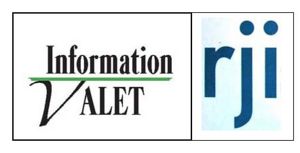Difference between revisions of "Blueprint"
| Line 2: | Line 2: | ||
[[Image:Ivp-rji-logo.jpg|thumb|300px|left|[[http://informationvalet.wordpress.com The Information Valet Project]]]] | [[Image:Ivp-rji-logo.jpg|thumb|300px|left|[[http://informationvalet.wordpress.com The Information Valet Project]]]] | ||
[[Image:Blueprint-photos.jpg|thumb|800px|right|[http://flickr.com/photos/33134655@N06/sets/72157610817325064/ View all photos by Josh Rowan]]] | [[Image:Blueprint-photos.jpg|thumb|800px|right|[http://flickr.com/photos/33134655@N06/sets/72157610817325064/ View all photos by Josh Rowan]]] | ||
| − | =From Blueprint to Build: Framing the Marketplace for Digital Information= | + | =From Blueprint to Build: <br>Framing the Marketplace for Digital Information= |
| − | ==<i>Dec. 2-3, 2010, Washington, D.C.</i>== | + | ==<i>Thursday/Friday Dec. 2-3, 2010, Washington, D.C.</i>== |
[[Image:Rji-ideas.jpg|thumb|150px|right|[http://rji.missouri.edu/image-library/stories/new-building/index.php RJI PICTURED]]] | [[Image:Rji-ideas.jpg|thumb|150px|right|[http://rji.missouri.edu/image-library/stories/new-building/index.php RJI PICTURED]]] | ||
[[Image:Rji-working.jpg|thumb|150px|right|[http://rji.missouri.edu/vision-and-mission/index.php THE RJI VISION]]] | [[Image:Rji-working.jpg|thumb|150px|right|[http://rji.missouri.edu/vision-and-mission/index.php THE RJI VISION]]] | ||
| − | < | + | <H3>PRICING . . . PRIVACY . . . TRUST . . . ADVERTISING . . . COMMERCE</H3> |
<big><h3>It’s time to frame the marketplace for digital information. Will you help?</h3></big> | <big><h3>It’s time to frame the marketplace for digital information. Will you help?</h3></big> | ||
Revision as of 22:07, 9 October 2010
LOOKING FOR "Blueprinting the Information Valet Economy," (2008 gathering)? Try LOOKING HERE.
Contents
From Blueprint to Build:
Framing the Marketplace for Digital Information
Thursday/Friday Dec. 2-3, 2010, Washington, D.C.
PRICING . . . PRIVACY . . . TRUST . . . ADVERTISING . . . COMMERCE
It’s time to frame the marketplace for digital information. Will you help?
News and information have never been more abundant and accessible than now. The advent of more portable, more function devices like smarts phones, tablets networked appliances of all sorts assures that this will continue.
The market is in place. But what are the currencies in trade? The first-generation information marketplace has been paid for by advertising. Yet as advertising becomes less mass market, and more personalized, consumers are asking: What is the tradeoff in personal privacy and information sharing? And as the reporters’ ranks shrink, the public also wonders: What will sustain the independent voices to tell us what we need to know as citizens?
Given these challenges – rising public concern about advertising and privacy, and shrinking support for reporting – it’s time to ask: What, now, are the building blocks for a new information economy?
Join the Donald W. Reynolds Journalism Institute on Dec. 2-3 in Washington, D.C., as we assess the materials needed to build an open marketplace for sharing and selling digital information. A marketplace open to participants of all sizes and all views, where the common currencies include trust, identity enabling unfettered products, prices and services.
THE LANDSCAPE
Why now? Because of game-changing, and recent, developments:
- Major ad-supported web sites are increasingly dependent upon third-party “cookies” for targeted ad serving just as the public and regulators are seeking to curtail the practice. A Zogby International poll released Oct. 8 found 85 percent of U.S. parents and 85 percent of U.S. teen-agers want online companies to ask their permission before sharing information with advertisers, and 88 percent of parents would support a law making “opt in” a legal requirement. (BACKGROUND)
- The New York Times Co. will announce during December details of its “metered paywall” approach to digital content sales across multiple platforms. Why is The Times is taking this approach and will other publishers do so, too?
- Midwest publishers have formed the American Newspaper Digital Access Corp. to collaborate on archives, tearsheets, charging and legal advertisements. Find out what will be their first service.
- The Times, The Washington Post and Gannett Co. Inc. have invested $12 million in “stealth” startup Ongo to build a common user experience for the sharing of digital content. Hear experts suggest the likely outlines of this service.
- Hearst, Conde Naste, Time Inc., News Corp. and Meredith Corp. are planning next year a common platform for the display -- and sale – of magazine and news services through their joint venture, Next Isssue Media Inc. How’s it coming?
- The New York Times, News Corp. and Gannett Co. Inc. are reportedly planning to have subscription-based news apps on the Android-powered Samsung 7-inch Galaxy tablet when it goes on sale before the end of the year.
- There’s more . . . Apple is said to be working on a digital-content store to take iTunes well beyond music and video . . . Google Inc. is talking with publishers about its NewsPage content-sales service . . . and Facebook seems likely to try and turn Facebook Credits into a generalized payment service beyond games.
 SILOED (Credit) |
Each of these initiatives represents a silo – an attempt by a portion of the marketplace to serve a territory and set of users. What could bring these emerging “walled gardens” together, for the benefit of users? Is there an analogy from another industry? Bank ATM networks began local, grew regionally, and then connected nationally and internationally.
How do we advance the user experience to the point where a user who wants the convenience of one account, one digital wallet, one identity, can gain access to and purchase information without walls?
THE MISSION
The mission of “Blueprint to Building: Framing the Marketplace for Digital Information” is this: Consider developing voluntary “building codes” which will enable the privacy-protected sharing of users – and atomized content – across all these emerging platforms. Just as the World Wide Web describes a standard for information transfer, will we ever have standards for privacy protection and information payments?
Listen to some of the experts:
"It is technically impossible for Yahoo! to be aware of all software or files that may be installed on a user's computer when they visit our site," Anne Toth, Yahoo's vice president of global policy and head of privacy, wrote to U.S. Reps. Edward Markey (D-Mass.) and Joe Barton (R-Texas). Microsoft Corp., YahooInc. and AOL Inc., AT&T Corp., CareerBuilder.com, Comcast Corp., Merriam-Webster.com, News Corp.'s MySpace.com, New York Times Co.'s About.com, Photobucket.com and Verizon Communications Inc. Removing tracking devices entirely would be "very detrimental to our business," CareerBuilder.com Chief Executive Matt Ferguson wrote to the lawmakers. "Nonetheless we are currently reviewing technology to determine whether we can adopt techniques to allow us to better monitor and control third-party cookies."
In the digital realm, paid content is a necessity, says Christoph Riess, CEO of the World Association of Newspapers and News Publishers. “Will paid content generate revenue?” he asked in a speech to the World Editors Forum on Oct. 8 in Hamburg, Germany. “It's not a question of yes or no. It's question of how. In order to survive, we have to do it.” http://www.editorsweblog.org/multimedia/2010/10/christoph_riess_about_the_future_of_news.php
“I would say in early December you are going to see the full explanation in regard to the meter, full explanation with regard to the pricing,” Janet Robinson, CEO of the New York Times Co., said Oct. 7 in an interview posted as audio at EditorsWebLog. She said, “We have spent two years preparing for our metered model and I think the way we feel about the metered model – it stills allows us to be part of the open web ecosystem.” http://www.editorsweblog.org/multimedia/2010/10/audio_janet_robinson_of_the_new_york_tim.php
“Clearly there is acknowledgement the industry needs to build scale quickly by collaboration,” says one news-industry researcher. “But the question is who’s platform?” Perhaps the answer is: No one company’s platform, but rather an open platform and open standards for trust, identity and information commerce with which all may participate, and profit.
HOW WE’LL PROCEED: THE TRACKS
“From Blueprint to Build: Framing the Marketplace for Digital Information,” will set the scene with a dinner, talk and discussion on Thurs., Dec. 2, 2010. Joining us at an optional pre-dinner reception will be executives of some of the companies and initiatives who seem most likely to have access to tools for framing the new information marketplace.
For the day on Friday, we’ll resolve into five tracks, each lead by a domain expert, for roundtable discussions focused on posing ideas for research, plans for experiments and frameworks for platform and standards collaboration that foster competition and open markets. Here are the tracks:
TRACK ONE: Pricing and Packaging
- Competitors should never be able to collude on pricing or service terms. But is it possible to describe a standard method for enabling dynamic, competitive pricing that changes based on time, use or user? So that individual information objects may be mixed, aggregated, disaggregated and shared and valued easily and broadly? A look at current and planned research and testing.
Proposed track leaders: Martin Langeveld, CircLabs Inc., and Charlie Terry (ex CompuServe and Comtex)
TRACK TWO: Trust, Identity and Commerce
- Federated authentication and microaccounting. Before the Internet, online services provided one-account, one-bill access to information. The Internet does not. Why not? Who’s working on this challenge and how might it be advanced?
Proposed track leaders: Paul Trevithick, Azigo Inc. and Richard Lerner, Clickshare Service Corp.
- TRACK THREE: Advertising One-to-One===
- As mass-market advertising splinters into one-to-one targeted marketing, the role of publisher changes from gatekeeper providing access to the market to “information valet” -- learning the needs of individual consumers and matching them with services. How will publishers be rewarded?
Proposed track leaders: Stephanie Padgett and Doc Searls
TRACK FOUR: The News Social Network.
- News used to be chosen and published by editors. Now it’s often curated, tweeted and posted by your friends. How can trusted news sources leverage, improve and co-exist with the social-network live stream?
Proposed track leaders: Jeff Vander Clute and Merrill Brown.
THE WRAPUP – NEXT STEPS
By 3 p.m. on Friday, we’ll wrap the day’s ideas in a joint session producing fresh insights, next steps, and formats for continued collaboration.
THE BACKGROUND
“From Blueprint to Build: Framing the Marketplace for Digital Information,” builds on earlier work of the Reynolds Journalism Institute in 2008, 2009 and earlier this year. RJI’s intention is to foster discussions with lead to ideas, experiments, research and solutions that sustain the values, principles and purposes of journalism.
- http://www.newshare.com/wiki/index.php/Event-blueprint
- http://www.newshare.com/wiki/index.php/Gwu-program
- http://www.newshare.com/wiki/index.php/Infotrust-blueprint2




